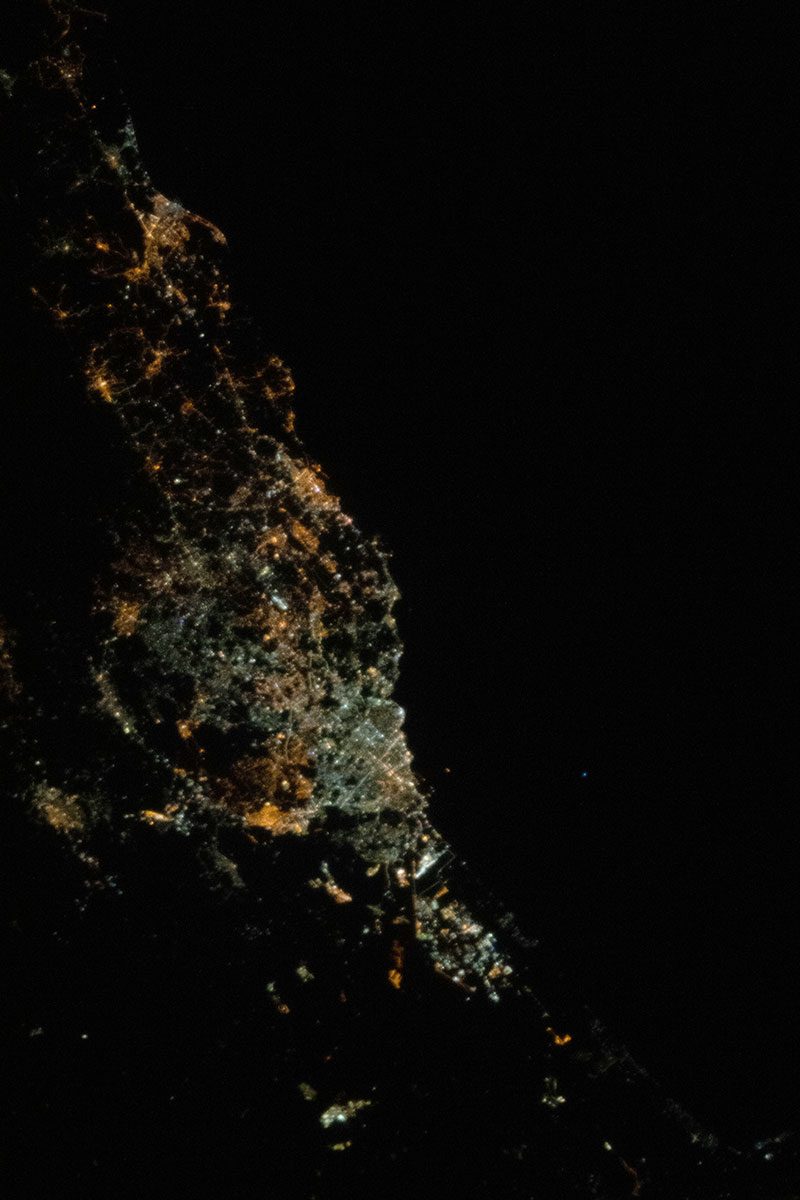Astronaut Luca Parmitano captured from ISS the night view of Catania, Italy.

Catania is the second-largest municipality in Sicily, after Palermo, both by area and by population. The city is located on Sicily’s east coast, facing the Ionian Sea at the base of the active volcano Mount Etna. Catania was founded in the 8th century BC by Chalcidian Greeks in Magna Graecia. The city has weathered multiple geologic catastrophes: it was almost completely destroyed by a catastrophic earthquake in 1169. A major eruption and lava flow from nearby Mount Etna nearly swamped the city in 1669 and it suffered severe devastation from the 1693 Sicily earthquake. During the 14th century, and into the Renaissance period, Catania was one of Italy’s most important cultural, artistic and political centres. Catania today is the industrial, logistical, and commercial centre of Sicily. Its airport, the Catania–Fontanarossa Airport, is the largest in Southern Italy. The central “old town” of Catania features exuberant late-baroque architecture, prompted after the 1693 earthquake, and is a UNESCO World Heritage Site.
The local scenery on the ground is as follows.

Reference: Luca Parmitano’s Tweet
See earthview photo gallery: LiVEARTH